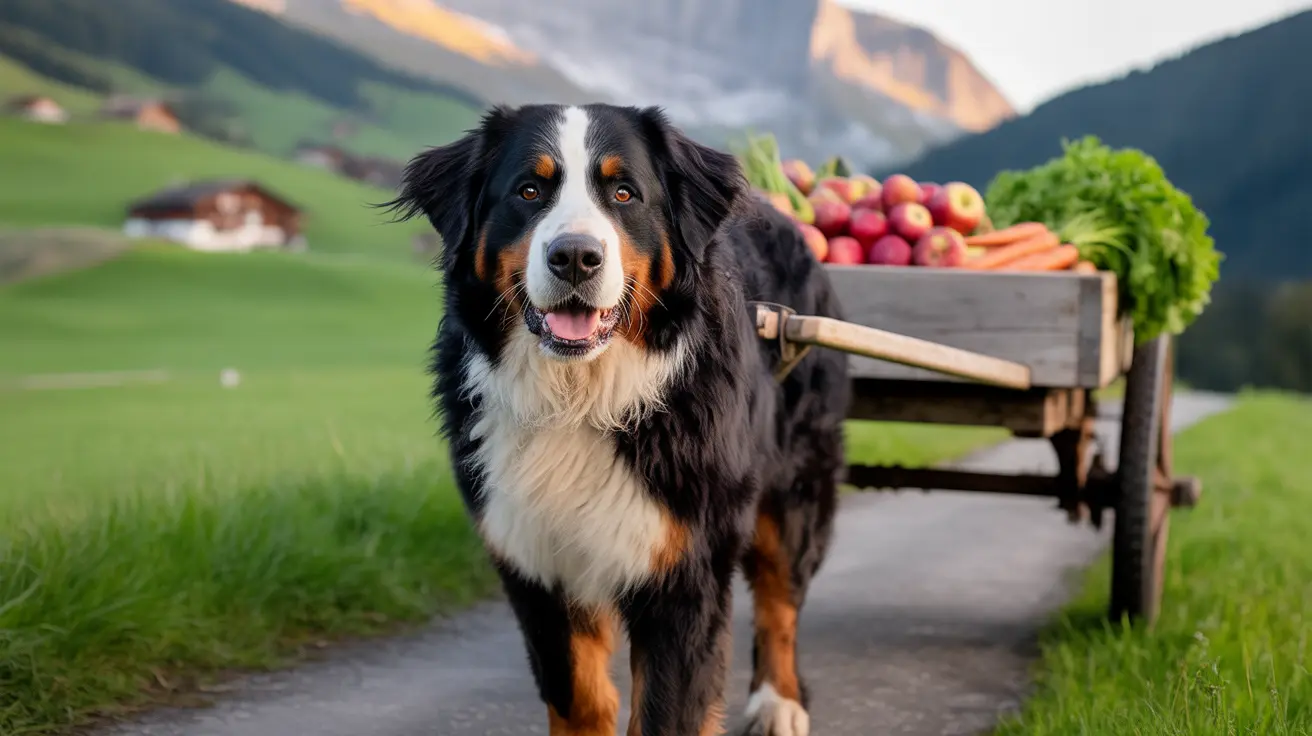The Bernese Mountain Dog, with its striking tri-colored coat and powerful build, stands as a testament to careful breeding for specific working purposes. These magnificent dogs were developed in Switzerland's Bern region, where they played crucial roles in farm life and agriculture. Understanding what Bernese Mountain Dogs were bred for reveals a fascinating history of versatility, strength, and unwavering loyalty.
Origins in the Swiss Alps
Descended from Roman mastiff-type dogs brought to Switzerland over two millennia ago, Bernese Mountain Dogs were carefully bred and refined in the canton of Bern. These dogs, known locally as Berner Sennenhund, emerged as one of four Swiss mountain dog breeds, each developed to meet the specific needs of Alpine farmers and herders.
Primary Working Roles
Draft Work and Transportation
The primary purpose of Bernese Mountain Dogs was to serve as draft animals. Their powerful bodies and willing temperament made them ideal for pulling carts loaded with milk, cheese, and other farm products. Farmers who couldn't afford horses relied heavily on these dogs to transport goods between farms and markets.
Their impressive strength allowed them to pull loads weighing up to 1,000 pounds, making them invaluable for agricultural communities throughout the Swiss Alps. This working heritage earned them the affectionate nickname "cheese dogs" among local farmers.
Cattle Driving and Herding
While not specialized herding dogs like Border Collies, Bernese Mountain Dogs excelled at driving cattle. They would help move small herds between valley farms and mountain pastures, displaying both the strength to control large animals and the gentleness to avoid causing stress to the livestock.
Guardian Duties
These dogs also served as reliable watchdogs and guardians. Their imposing size and protective instincts made them excellent deterrents against predators and intruders, while their intelligent and discerning nature helped them distinguish between genuine threats and normal farm activities.
Breed Characteristics Developed for Work
The working heritage of Bernese Mountain Dogs is reflected in their physical characteristics. Their muscular build and broad chest provided the power needed for draft work, while their thick double coat protected them during long hours in harsh Alpine weather. Their distinctive tri-colored markings made them visible against both snow and darkness, an important feature for working dogs.
Modern Evolution
Today, while few Bernese Mountain Dogs perform their original working roles, their inherent traits make them exceptional family companions. Their patient, gentle nature - originally developed to work closely with farmers - now makes them excellent therapy dogs and family pets. Some enthusiasts still participate in carting competitions, keeping the breed's working heritage alive.
Frequently Asked Questions
What were Bernese Mountain Dogs originally bred to do on Swiss farms?
Bernese Mountain Dogs were bred as versatile farm dogs, primarily serving as draft animals for pulling carts, driving cattle, and guarding property. They were essential workers on Swiss farms, particularly in the Bern region.
How did Bernese Mountain Dogs help farmers transport milk, cheese, and produce?
These dogs were equipped with special carts and harnesses, allowing them to pull heavy loads of farm products between farms and markets. Their strength and endurance made them capable of transporting substantial weights over considerable distances.
Why are Bernese Mountain Dogs called "cheese dogs" in Switzerland?
The nickname "cheese dogs" came from their frequent role in transporting dairy products, especially cheese, from Alpine dairy farms to markets in the valleys. This was one of their most important duties in Switzerland's dairy-producing regions.
Were Bernese Mountain Dogs used for herding cattle or other animals historically?
While not primarily herding dogs, they were used to drive cattle between valley farms and mountain pastures. Their size and strength made them effective at moving small herds, though they weren't typically used for detailed herding work with sheep or goats.
How did the Bernese Mountain Dog's strength and temperament make them good draft and guard dogs?
Their powerful build provided the physical strength for pulling heavy loads, while their calm, steady temperament made them reliable workers. This combination, along with their natural protective instincts, made them ideal for both draft work and guarding duties on Swiss farms.






